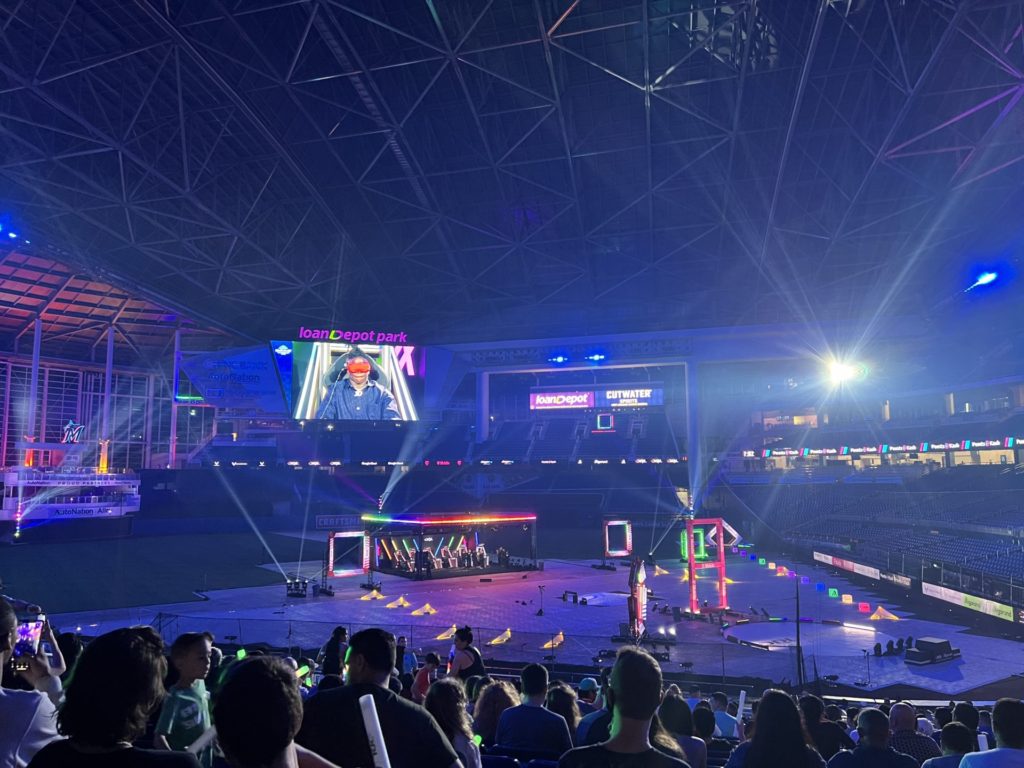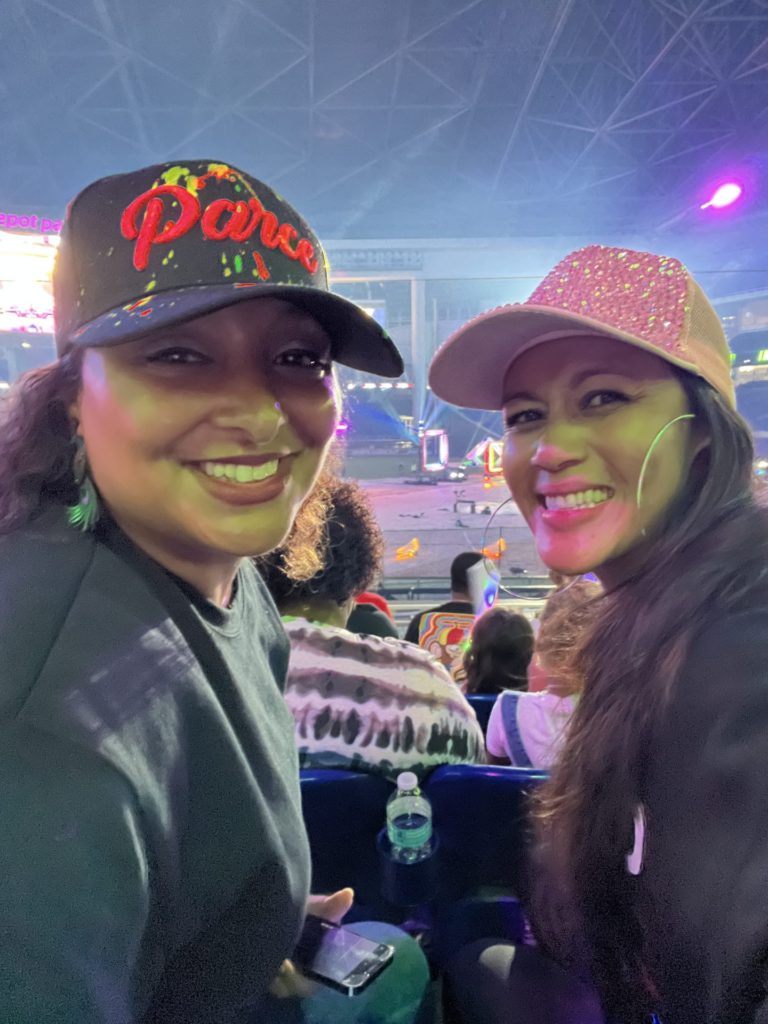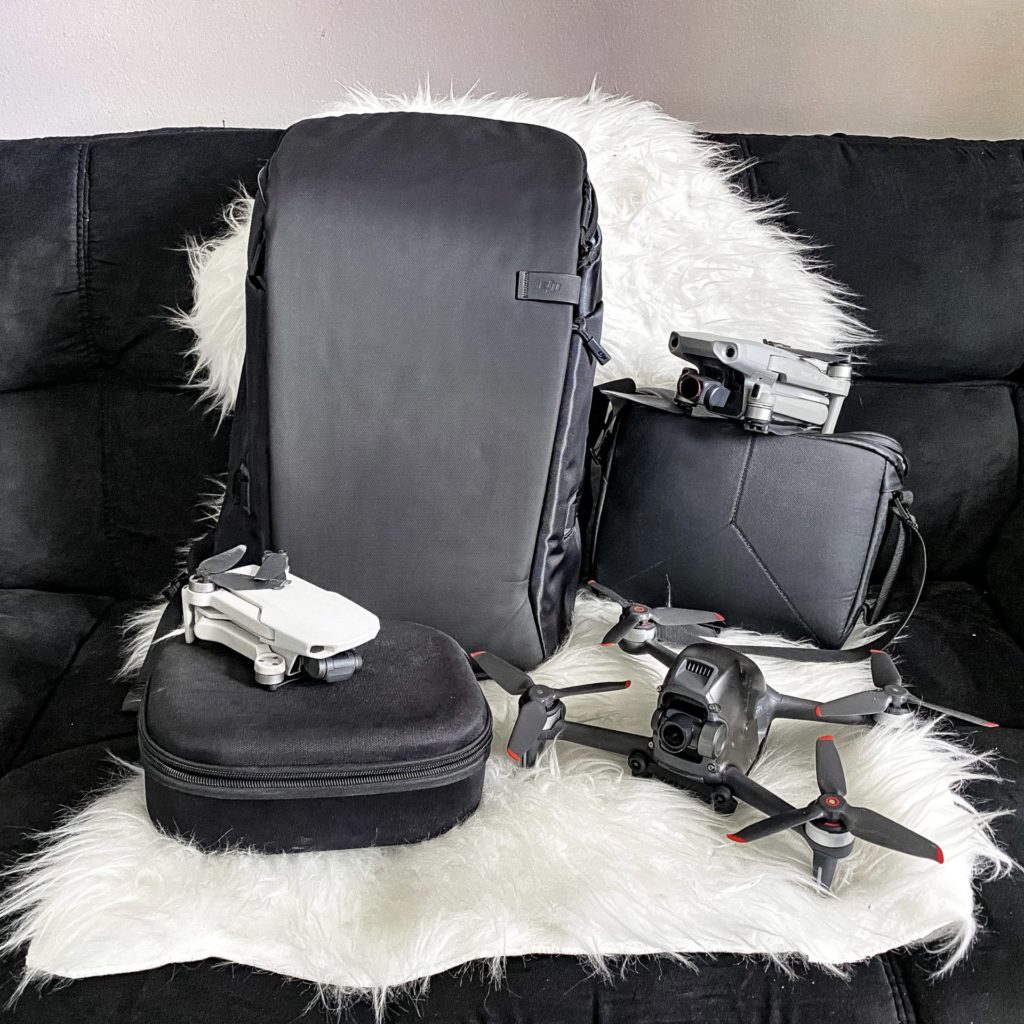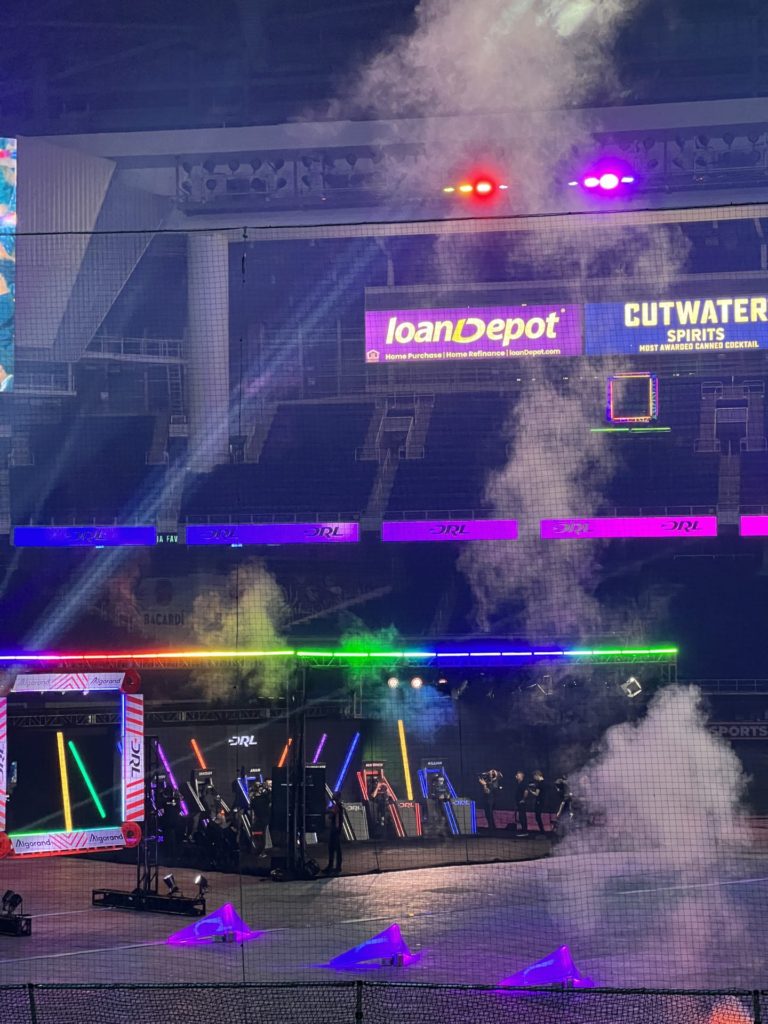Is First Person View or FPV drone racing actually interesting to watch? What happens at these FPV drone races, is it fun, who goes to them, and more in today’s blog post.
I attended the largest in-person FPV drone race in the world (to date). It was held by The Drone Racing League at LoanDepot in Miami, Florida.

The popularity of FPV drones has grown rapidly in recent years, driven in part by the availability of affordable and high-quality equipment, as well as the rise of social media platforms where pilots can share their videos and compete with each other. FPV drone racing has also become a popular sport, with organized competitions and events held around the world.
What are FPV Drones?
FPV (first-person view) drones are remote-controlled aircraft that are equipped with a camera that streams live video to the pilot through a video transmitter and a pair of goggles or a monitor. This immersive experience allows the pilot to see exactly what the drone is seeing in real-time, which creates a thrilling and unique flying experience.
FPV drones are often used for racing, aerial photography and videography, and freestyle flying. They are typically designed with high-speed motors, agile maneuverability, and strong lightweight frames to provide maximum performance and agility during flight. The cameras on FPV drones are also designed to capture high-quality video footage, allowing pilots to create stunning aerial videos and images.
Overall, FPV drones have become increasingly popular among hobbyists, enthusiasts, and professionals who are looking for a unique and immersive flying experience.
What Happens at FPV Races?
At this specific event by The Drone Racing league, pilots from all over the world fly their FPV drones through a designated course and compete to see who can complete the course in the shortest amount of time. On average, it took pilots around 1 minute and 10 seconds to complete the course (assuming they didn’t crash).
Here’s how FPV races typically work:
- Course Setup: Before the race, the course is set up using gates, flags, and obstacles. The course may be outdoors or indoors, and can include a variety of challenges such as tunnels, tight turns, and high-speed straightaways.
- Pilots Briefing: All the pilots who will be participating in the race attend a briefing, where they are briefed on the course layout, the rules of the race, and any safety instructions. Pilots are also assigned a frequency band for their video transmission, to avoid interference with other pilots.
- Qualifying Rounds: The pilots are divided into heats, with each heat having several pilots. Each pilot gets multiple attempts to complete the course, and the pilots with the fastest times move on to the next round.
- Elimination Rounds: The pilots who made it through the qualifying rounds compete in elimination rounds. The number of pilots in each round is reduced, with the slowest pilots being eliminated until there are only a few pilots left.
- Finals: The remaining pilots compete in the finals, with the winner being the pilot who completes the course in the shortest amount of time.
- Award Ceremony: The top pilots are recognized and awarded prizes for their performance in the race.
Overall, FPV racing is a fun and exciting sport that requires skill, precision, and speed. It has become increasingly popular in recent years, with organized events and competitions held around the world.
If you want to visually SEE what this event was like, consider checking out the full podcast video below!
Why So Many FPV Drone Crashes?
I was amazed at how many crashes we saw. I thought I might see one or two the entire night, but it was one or two per race and we saw somewhere in the 15-20 range of races.
Given the pilots all take off at the same time and are flying through obstacles in a tight space, it’s no surprise that a propellor might hit one of the marks or crash into another racing FPV drone.
The post below shows a drone crashing, bouncing off the ground, and then continuing to fly. It was amazing!
Who Attended the FPV Drone Race?
Even though it was the most attended race, the audience only took up about 20-25% of the entire baseball park at LoanDepot. Not only that, it literally felt like walking into an Elementary School. The place was packed with kids and their parents.

I think Mari (The Queen of Trips) and I were the only women there that did not have kids. To be honest, it was exciting to see so many kids getting excited about drones. After all, they are the future drone pilots.
So does that mean it was or wasn’t fun to attend?
Is it Fun to Attend FPV Drone Racing?
To be honest, it is… but it’s also like ice skating in New York City. It’s novel, it’s incredibly fun, and the first three times you go around it’s absolutely amazing. Then the 10th time you go around… and 11th… it starts to lose it’s fun.
Checkout this livestream for a real time view of what it’s like. I will admit, the ballpark did a lot to hype the crowd.
Best FPV Drones
The history of FPV drones has been one in which people buy kits and build their own drones. However in recent years, DJI has made significant improvements to FPV technology and with a literal “push of a button” it goes from being a manual flight to flying automatically (i.e. hovering on it’s own) like a regular drone.
This advancement has made FPV drones very accessible to everyone.
Whereas before it was common to crash your FPV drone regularly, now there is an emergency button that can help to “save” your drone from crashing.
Below are some of two of the most popular FPV drones by DJI.

DJI FPV Drone
The DJI FPV is one of the most popular and well-regarded FPV drones on the market. It offers a high-quality camera, excellent range, and an immersive flying experience. It’s also beginner-friendly, with built-in safety features and intuitive controls.
It features a 4K camera that can capture stunning video footage and photos, and has a 150-degree field of view for an immersive flying experience. The DJI FPV also has a maximum flight time of 20 minutes and can reach speeds of up to 87 mph (140 kph).
One of the unique features of the DJI FPV is its built-in obstacle avoidance system, which uses sensors to detect and avoid obstacles in the drone’s path. This makes it easier to fly the drone safely, especially for beginners who are still learning to control it.
The DJI FPV also comes with a dedicated remote controller that is designed specifically for FPV flying, with a built-in screen that displays the live video feed from the drone. The remote controller also has a comfortable grip and intuitive controls, making it easy to fly the drone.
Overall, the DJI FPV is a great option for anyone who is looking for an immersive and high-quality FPV flying experience, whether for racing, photography, or just for fun. However, it is a more expensive option compared to some other FPV drones on the market.
DJI Avata
In contrast to the DJI FPV, the DJI Avata is a cinewhoop style drone. With a different shape and build, this smaller drone is meant for tight spaces and is slightly slower with normal mode at 18mph and it’s fastest speed at 60 mph.
Want to See What It’s Like Flying FPV?
Consider the free app for your phone to jump into a simulator and see what it’s like to fly FPV drones!

Attend a Future FPV Race
Want to attend a future event? Check the event calendar from The Drone Racing League!
Become a PRO at flying your drone
MASTER your drone and gain the confidence to EASILY fly!
Whether you’re just getting started, or trying to become an advanced pilot selling your drone photography and videography, consider checking out the drone courses!
Bottom Line
If you have an opportunity to (logistically easily) see an in person FPV drone race – it’s definitely worth checking out, but not worth going out of your way. It’s a novel thing and genuinely fun to watch these drones fly at top speed through challenging courses. Even better, if you have a kid — BRING THAT KID! They make the events very family friendly and the majority of people attending are children.